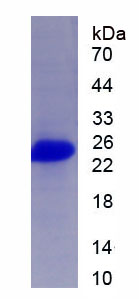Recombinant Apolipoprotein E (APOE) 

Apo-E; AD2; Apoprotein; Alzheimer Disease 2(E4-Associated,Late Onset
Overview
Properties
- Product No.RPA704Po01
- Organism SpeciesSus scrofa; Porcine (Pig) Same name, Different species.
-
Applications
Positive Control; Immunogen; SDS-PAGE; WB.
If bio-activity of the protein is needed, please check active protein.
Research use only - DownloadInstruction Manual
- CategoryMetabolic pathwayCardiovascular biologyHepatology
- Source Prokaryotic expression, Host E.coli
- Endotoxin Level<1.0EU per 1µg (determined by the LAL method)
- Subcellular LocationSecreted
- Molecular Mass 22.6kDa, Accurate 25kDa(Analysis of differences refer to the manual)
- Residues & TagsCys16~Arg175 with N-terminal His Tag
- Buffer FormulationPBS, pH7.4, containing 0.01% SKL, 5% Trehalose.
- Traits Freeze-dried powder, Purity > 95%
- Isoelectric Point4.9
Share your citation
Upload your experimental result
Review
Leave a message
Loading...
Sign into your account
Share a new citation as an author
Upload your experimental result
Review
Please attach serial No. on instruction manual


Contact us
Please fill in the blank.
Name*
Organization
Address
E-mail address*
Telephone
Inquiry*
Verification code*

Sequence

Usage
Reconstitute in 10mM PBS (pH7.4) to a concentration of 0.1-1.0 mg/mL. Do not vortex.
Storage
Avoid repeated freeze/thaw cycles. Store at 2-8°C for one month. Aliquot and store at -80°C for 12 months.
Stability
The thermal stability is described by the loss rate. The loss rate was determined by accelerated thermal degradation test, that is, incubate the protein at 37°C for 48h, and no obvious degradation and precipitation were observed. The loss rate is less than 5% within the expiration date under appropriate storage condition.
Increment services
-
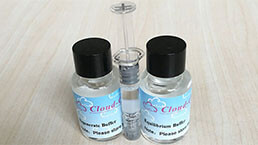 Endotoxin Removal Kit
Endotoxin Removal Kit
-
 BCA Protein Quantification Kit
BCA Protein Quantification Kit
-
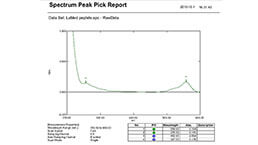 Protein Labeling Customized Service
Protein Labeling Customized Service
-
 Molecular Mass Marker for Protein
Molecular Mass Marker for Protein
-
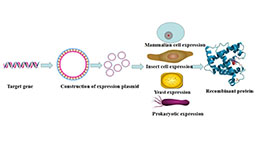 Recombinant Protein Customized Service
Recombinant Protein Customized Service
-
 Monoclonal Antibody Customized Service
Monoclonal Antibody Customized Service
-
 Polyclonal Antibody Customized Service
Polyclonal Antibody Customized Service
-
 Protein Activity Test Experiment Service
Protein Activity Test Experiment Service
-
 Immunoprecipitation (IP) Experiment Service
Immunoprecipitation (IP) Experiment Service
-
 Buffer
Buffer
-
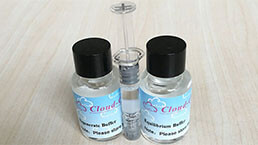 Endotoxin Removal Kit II
Endotoxin Removal Kit II
-
 Real Time PCR Experimental Service
Real Time PCR Experimental Service
-
 Spike RBD Protein (S-RBD)
Spike RBD Protein (S-RBD)
-
 Protein G
Protein G
-
 Protein A
Protein A
Citations
- Cerebrospinal fluid apolipoprotein E concentration decreases after seizureSeizure: PIIS1059131109002441
- Hepatic lipase- and endothelial lipase-deficiency in mice promotes macrophage-to-feces RCT and HDL antioxidant propertiesPubMed: 23328279
- Expression and clinical significance of apolipoprotein E in pancreatic ductal adenocarcinomaPubmed: 23609192
- Adipocyte Atp-Binding Cassette G1 Promotes Triglyceride Storage, Fat Mass Growth And Human ObesityPubmed:25249572
- Frequencies of apolipoprotein E alleles in depressed patients undergoing hemodialysis – a case-control studyPubMed: 25707516
- Culturing of HepG2 cells with human serum improve their functionality and suitability in studies of lipid metabolismPubMed: 26515253
- Adipocyte ATP-binding cassette G1 promotes triglyceride storage, fat mass growth, and human obesityPubMed: 25249572
- Adaptive immunity against gut microbiota enhances apoE-mediated immune regulation andreduces atherosclerosis and western-diet-related inflammation.pubmed:27383250
- Differential effects of apoE and apoJ mimetic peptides on the action of an anti-Aβ scFv in 3xTg-AD micePubmed:30026023
- Deletion of plasma Phospholipid Transfer Protein (PLTP) increases microglial phagocytosis and reduces cerebral amyloid-β deposition in the J20 mouse …Pubmed:29731975
- Comparative proteomics analysis of serum proteins in gestational diabetes during early and middle stages of pregnancyPubmed: 31162828
- Hepatic HuR modulates lipid homeostasis in response to high-fat dietPubmed: 32546794
- Pathology and Proteomics-Based Diagnosis of Localized Light-Chain Amyloidosis in Dogs and CatsPubmed: 32880234
- The Significance of Apolipoprotein E Measurement in the Screening of Fetal Down Syndrome33321701
- Discovery and validation of FBLN1 and ANT3 as potential biomarkers for early detection of cervical cancer33602229
- GP73 is a TBC-domain Rab GTPase-activating protein contributing to the pathogenesis of non-alcoholic fatty liver disease without obesity34853313
- Iridium nanoclusters as high sensitive-tunable elemental labels for immunoassays: Determination of IgE and APOE in aqueous humor by inductively coupled …Pubmed:35378356
- Gold nanoclusters as elemental label for the sequential quantification of apolipoprotein E and metallothionein 2A in individual human cells of the retinal …Pubmed:35361429





